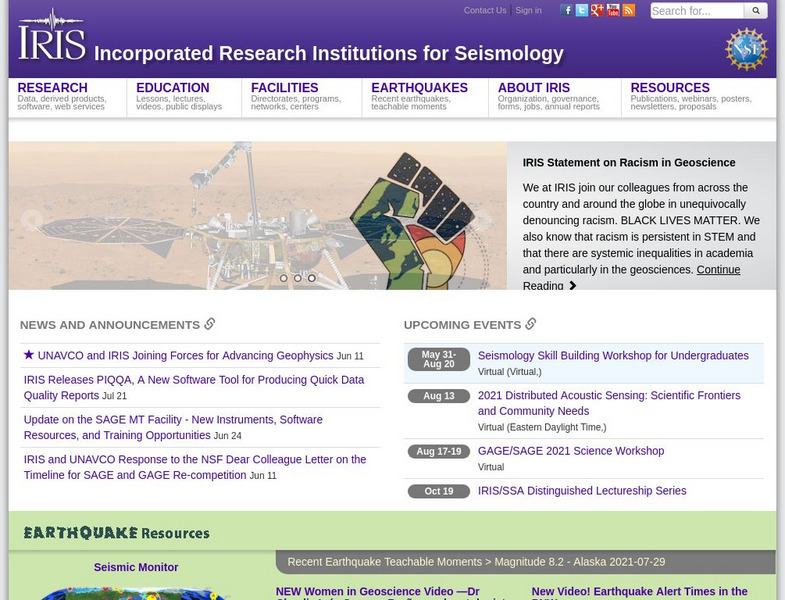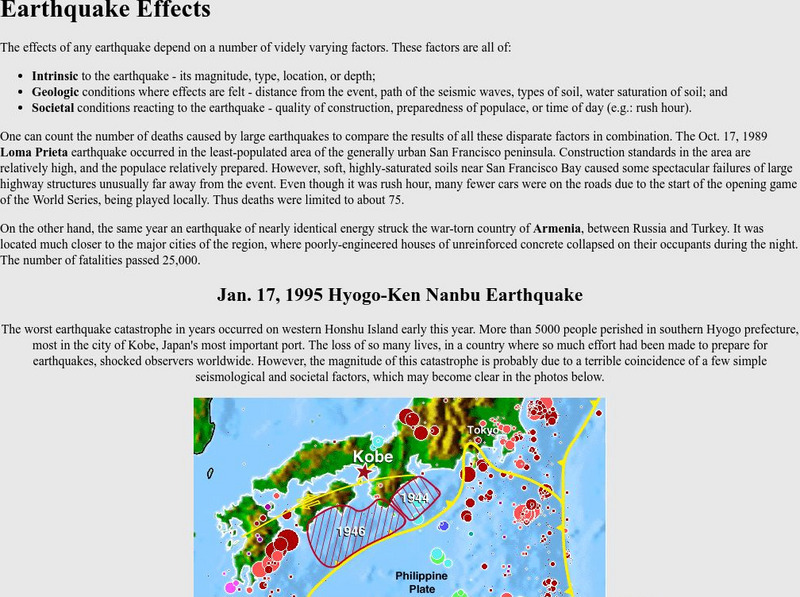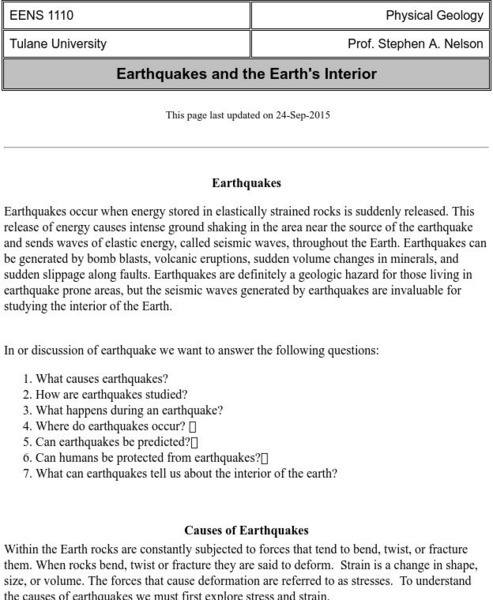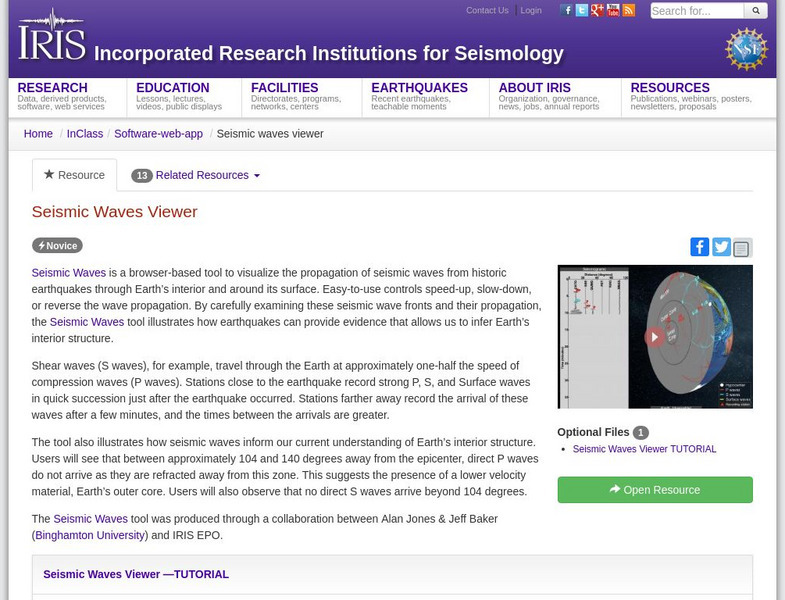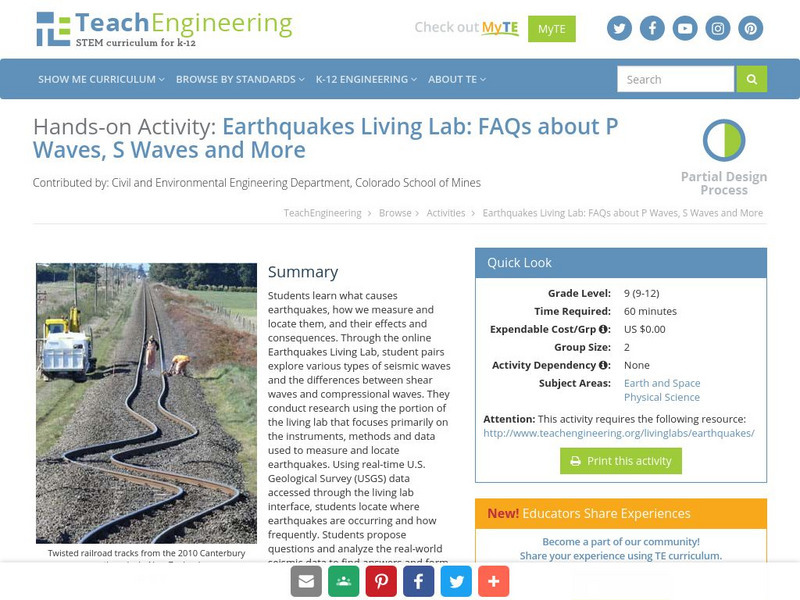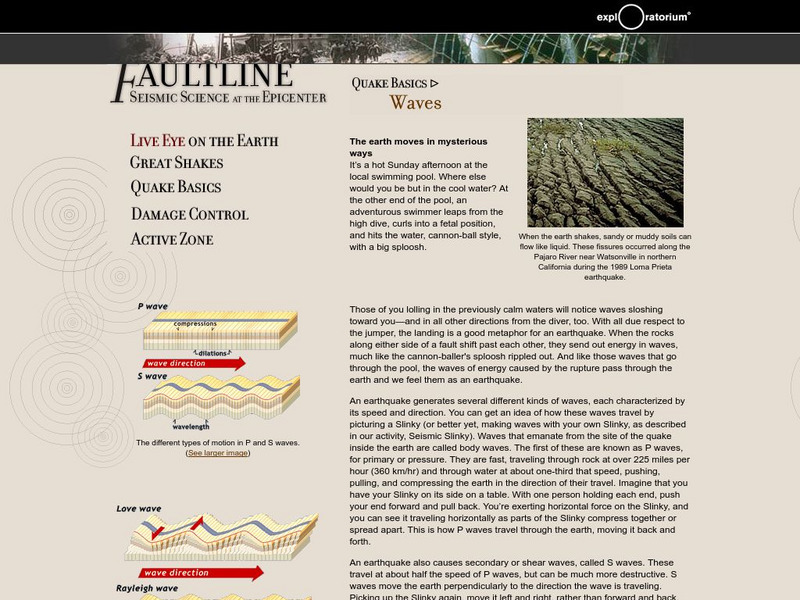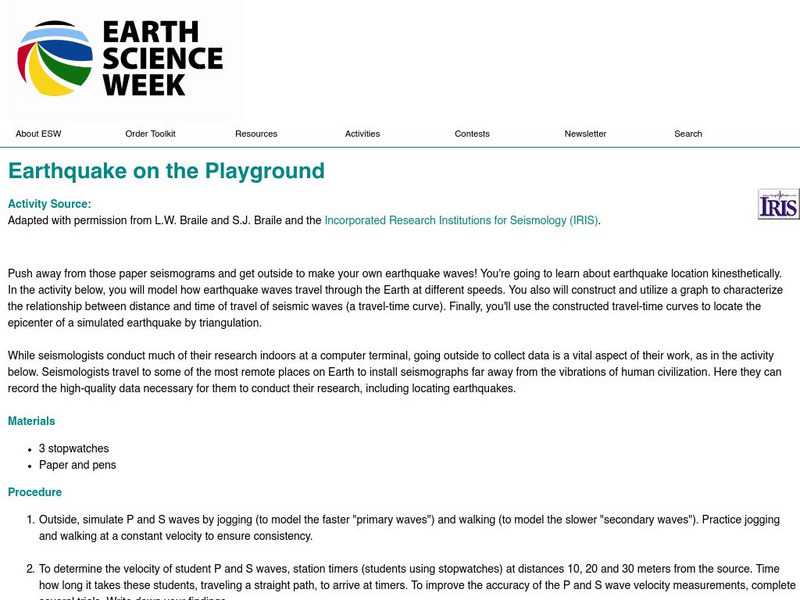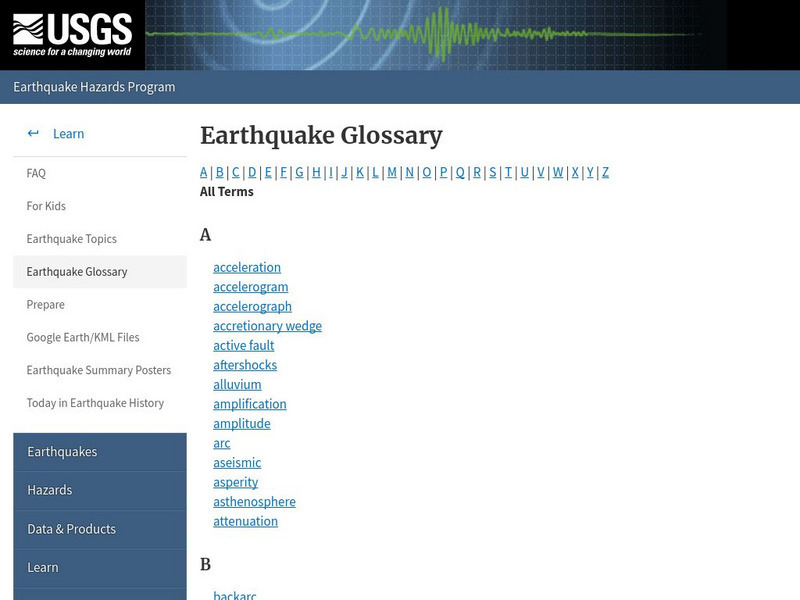Incorporated Research Institutions for Seismology
Iris: Incorporated Research Institutions for Seismology
This university consortium provides on-going, current information on seismic activity happening all over the world. Of special interest is the Seismic Monitor. Open this page to a full screen to monitor global earthquake activity in real...
Other
Earthquakes Canada: What Is a Seismologist?
Gives a basic description of a seismologist as well as some tools they use and interest that lend themselves best to seismology.
Other
Nevada Seismological Laboratory: Earthquake Effects in Kobe, Japan
Defines the basic earthquake effect categories: intrinsic, geologic, and societal and provides information of earthquake effects within the context of different earthquakes.
Other
Tulane University: Earthquakes and Earth's Interior
College instructor's notes on seismology includes earthquake origins, seismic waves, risks and damage assessments, and other information about the interior structure of the Earth.
American Geosciences Institute
American Geosciences Institute: Careers: Seismologist
Learn about the work of a seismologist, and find out what it takes to work in the field of seismology.
Other
University of Wisconsin Green Bay: Faults and Earthquakes
This site is primarily set up as an outline and is loaded with graphs, maps, and images. It covers a variety of earthquake-related topics, such as what causes earthquakes, fault lines and structures, seismology, a historical look at...
Incorporated Research Institutions for Seismology
Iris: J Ama Seis
jAmaSeis facilitates the study of seismological concepts in middle school through introductory undergraduate classrooms. Users can obtain and display seismic data in real-time from either a local instrument or from remote stations.
Incorporated Research Institutions for Seismology
Iris: Seismic Waves Viewer
Visualize the propagation of seismic waves from historic earthquakes through Earth's interior and around its surface.
Other
Nevada Seismological Laboratory: Seismic Waves
This resource describes the two different types of seismic waves and how they travel through the earth, offers diagrams of the waves, their speeds, and how seismograms are used to locate earthquakes.
Michigan Technological University
Up Seis: How Are Earthquakes Studied?
Seismologists study earthquakes by going out and looking at the damage cause by the earthquakes and by using seismographs. Find out who invented the first seismograph and how modern technology has changed the face of seismology when you...
Other
International Inst. Of Seismology and Earthquake Engineering: Tohoku Earthquake
Technical information on the earthquake of March 22, 2011, consists of facts about the mainshock, tsunami simulation, and determination of earthquake magnitudes.
Incorporated Research Institutions for Seismology
Iris: Gps Measuring Plate Motion [Pdf]
This resource looks at how geologists are able to measure the movement of tectonic plates using satellite-based data and how they were able to surmise in the past that the plates were moving. It also discusses how to read GPS time-series...
Science Education Resource Center at Carleton College
Serc: Serpentinite in Subduction Zones: How Do We Find It, and How Common Is It?
An advanced lesson in the study of serpentinites in subduction zones. Students will need a good understanding of mineralogy. of how to read phase diagrams and 2D images of the seismological features of subduction zones.
University of Colorado
University of Colorado: Seismic Waves
Basic definitions and characteristics of the different wave types, diagrams, and speeds of the waves. Has links to information on seismology, earthquakes, and plate tectonics.
Exploratorium
Exploratorium: Loma Prieta, Bay Area, Earthquake 1989
This outstanding multimedia site documents the earthquake and related events that took place on October 17, 1989 in the San Francisco Bay Area.
Other
Federal Emergency Management Agency: Tremor Troop: Earthquakes [Pdf]
A 260-page unit of activities on earthquakes. Covers what they are, their cause, why and where they occur, their impact on the Earth, how they are measured, and safety and survival. Includes worksheets and has a glossary at the end.
University of California
University of California: Understanding Earthquakes
This website is a resource for learning about earthquakes. Java animation at this site helps you visually understand the causes of earthquakes.
TeachEngineering
Teach Engineering: Earthquakes Living Lab: P Waves, S Waves and More
Students learn what causes earthquakes, how we measure and locate them, and their effects and consequences.
University of Wisconsin
The Why Files: Science Behind the News
The Why? Files from the University of Wisconsin explains the science behind the news. The website, tackling issues in news headlines, provides a good mix of information and interactivity that takes the "chore" out of learning.
Exploratorium
Exploratorium: Faultline: P and S Waves
The different types of earthquake waves are discussed and illustrated. Features geologist video clip.
American Geosciences Institute
American Geosciences Institute: Earth Science Week: Earthquake on the Playground
In this experiment, students go outside and create a simulation of P and S waves traveling across a 30-meter span. This is repeated using a 30-meter square. They experiment with P and S wave behavior, record results, and use...
US Geological Survey
U.s. Geological Survey: Earthquake Center: Glossary
This resource provides definitions of important earthquake related terms.
US Geological Survey
U.s. Geological Survey: Earthquakes for Kids
A collection of articles, games, printouts, facts, science fair ideas, and links through which students learn about the history and science of earthquakes and also explore what it takes to be an "earthquake scientist."
Smithsonian Institution
National Museum of Natural History: This Dynamic Planet
Research and explore past earthquake and volcanic activity on this interactive world map. User can manipulate which notable events and other map characteristics to view depending on the type of study being done.
Other popular searches
- Seismology Timeline
- Seismology Time Line
- Time Line of Seismology
- Timeline of Seismology
- Seismology Earth Layers
- Onshore Seismology
- Seismology Plate Tectonics
- Offshore Seismology
- Development of Seismology
